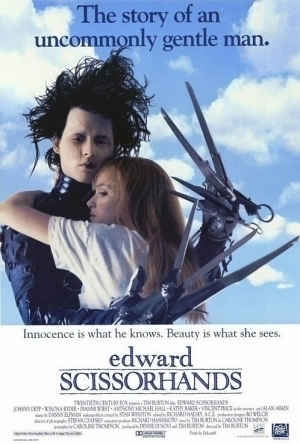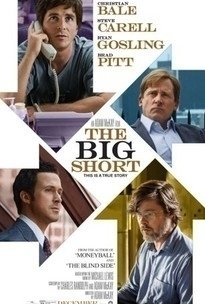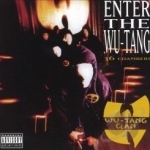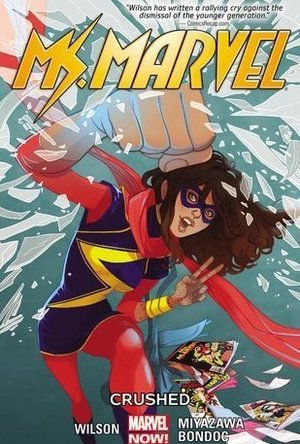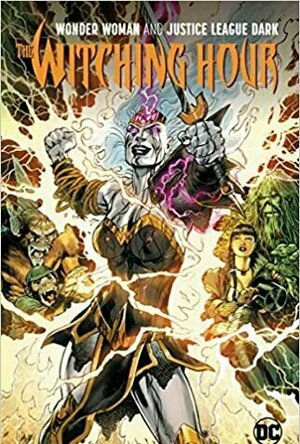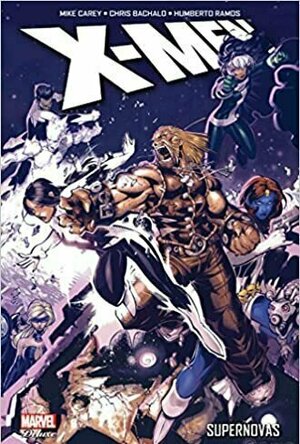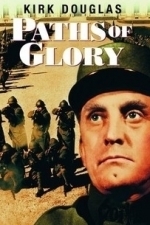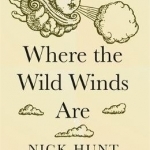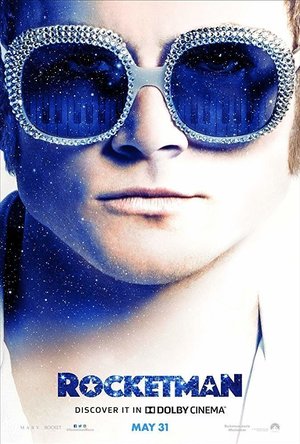Search
Search results
BankofMarquis (1832 KP) rated Edward Scissorhands (1990) in Movies
Apr 23, 2020
Has more heart than later Burton/Depp collaborations
There have been many actor/director long term collaborations through the years - John Ford/John Wayne, Martin Scorcese/Robert DeNiro and Alfred Hitchock/Jimmy Stewart all come to mind. Another interesting collaboration is the unique one between Tim Burton and Johnny Depp. The films these 2 have made have shown an "outsider" being introduced into an environment - usually in a quirky and gothic dark manner. So it was interesting to go back to the film that started it all - 1990's EDWARD SCISSORHANDS.
Interestingly enough, this film works because of the lack of weight of previous Burton/Depp collaborations.
Let me explain...
If you were to hear today that Tim Burton and Johnny Depp were to collaborate on a film, what expectations would you have? Quirky, dark and gothic comes to mind. With EDWARD SCISSORHANDS, none of these expectations were in place. You can see the purity in the beginning of this collaboration with these 2 artists finding there footing together in a film that is...yes...quirky, dark and gothic.
It is also, unexpectedly, light, airy, funny and poignant - traits that I think get lost in later Burton/Depp collaborations....collaborations where the focus seemed to be on the design and look and less on the emotion.
Set in a timeless, stylized world that is part '50's, part '60's, part 80's and part "everything else", EDWARD SCISSORHANDS is Burton's loose retelling of the Frankenstein story, where an isolated inventor (in this case Vincent Price) creates life (Depp)...with scissors for hands (you'll have to see the film to see why). When a local resident (and door to door cosmetic saleslady) discovers Edward living alone, she invites him into her house - and into the lives of the the neighborhood that exists below.
Depp owns this character - and owns it well. He brings an innocence and integrity to this character that rides a fine line well. His character is naive - but not simpleminded. He is longing to please - and to be loved - but has his own mind. In Depp's performance, you see an actor coming into his own.
He is joined - wonderfully - by Diane Wiest as the lady that invites him into her home. Winona Ryder (who turned down Godfather 3 to appear in this film) as Wiest's daughter (and object of Edward's affections) and the great Alan Arkin as the patriarch of the family who is a fun stereo-type of the Suburban dad.
All of this is packaged - uniquely - by Burton with an "8 crayon" color palate that exaggerates the various styles of the time. It is an expert job of combining styles into a unique vision that works very, very well.
I also have to give Burton credit for casting the iconic horror movie veteran Vincent Price (in his last film role) as the inventor of Edward Scissorhands.
I was taken under the spell of this film - and not just because of the interesting visuals - it has a heart and soul (because of Depp's work) that, I think both Depp and Burton lose in some of their later collaborations.
If you haven't seen this film in awhile - check it out - I think you'll like it.
Letter Grade: A-
8 stars (out of 10) and you can take that to the Bank(ofMarquis)
Interestingly enough, this film works because of the lack of weight of previous Burton/Depp collaborations.
Let me explain...
If you were to hear today that Tim Burton and Johnny Depp were to collaborate on a film, what expectations would you have? Quirky, dark and gothic comes to mind. With EDWARD SCISSORHANDS, none of these expectations were in place. You can see the purity in the beginning of this collaboration with these 2 artists finding there footing together in a film that is...yes...quirky, dark and gothic.
It is also, unexpectedly, light, airy, funny and poignant - traits that I think get lost in later Burton/Depp collaborations....collaborations where the focus seemed to be on the design and look and less on the emotion.
Set in a timeless, stylized world that is part '50's, part '60's, part 80's and part "everything else", EDWARD SCISSORHANDS is Burton's loose retelling of the Frankenstein story, where an isolated inventor (in this case Vincent Price) creates life (Depp)...with scissors for hands (you'll have to see the film to see why). When a local resident (and door to door cosmetic saleslady) discovers Edward living alone, she invites him into her house - and into the lives of the the neighborhood that exists below.
Depp owns this character - and owns it well. He brings an innocence and integrity to this character that rides a fine line well. His character is naive - but not simpleminded. He is longing to please - and to be loved - but has his own mind. In Depp's performance, you see an actor coming into his own.
He is joined - wonderfully - by Diane Wiest as the lady that invites him into her home. Winona Ryder (who turned down Godfather 3 to appear in this film) as Wiest's daughter (and object of Edward's affections) and the great Alan Arkin as the patriarch of the family who is a fun stereo-type of the Suburban dad.
All of this is packaged - uniquely - by Burton with an "8 crayon" color palate that exaggerates the various styles of the time. It is an expert job of combining styles into a unique vision that works very, very well.
I also have to give Burton credit for casting the iconic horror movie veteran Vincent Price (in his last film role) as the inventor of Edward Scissorhands.
I was taken under the spell of this film - and not just because of the interesting visuals - it has a heart and soul (because of Depp's work) that, I think both Depp and Burton lose in some of their later collaborations.
If you haven't seen this film in awhile - check it out - I think you'll like it.
Letter Grade: A-
8 stars (out of 10) and you can take that to the Bank(ofMarquis)
BankofMarquis (1832 KP) rated The Big Short (2015) in Movies
Apr 19, 2020
Gets Better On Each Rewatch
Most of you reading this review remember the last time the U.S. had a downturn in it's economy - it was 2008 and the downturn was caused by a bubble that burst in the housing market. Michael Lewis' (author of MONEYBALL) book THE BIG SHORT attempted to explain what happend in lay man's terms. This books was considered "unfilmable" until the most unlikeliest of artists stepped in to make a wonderfully crafted and educational film that was also entertaining.
That person was Adam McKay - up until that time, known as the Director of such Will Ferrell films as STEP BROTHERS and ANCHORMAN.
Set in the timeframe right before - and during - the economic downturn (approx. 2006-2008), THE BIG SHORT follows 4 groups/individuals that begin to see that something is wrong - both with this seemingly "bullet proof" housing market and the institutions/regulations and governance around them.
Christian Bale is outstanding (and was nominated for an Oscar) for his work as Dr. Michael Burry a socially awkward genius who is the first to ferret out that something is wrong and "bets against the market". Bale's portrayal of a non-social (almost) recluse who speaks his mind is engaging and fascinating to watch. It was with this performance that I decided that Bale is, perhaps, the finest actor working today. Also stepping up his game - as a surprise to me - is Ryan Gosling as the narrator of this story. He has the right balance of charm and "smarminess" and often breaks the 4th wall to explain to us what is going on. Also on board, strongly, is Brad Pitt (one of the Producers of this film) as an ex-Wall Street maverick who is pulled back in by the opportunity this impending crash is creating.
But, the surprise to me in this film is the heart-breaking, gut-wrenching turn of Steve Carrell as Wall Street broker Mark Baum who's caustic personality hides some serious scars underneath and who takes the failures of "the system" to protect the people personally. Carrell was nominated for an Oscar the year before in his first major dramatic turn - FOXCATCHER - but I think his work here is stronger, more layered and nuanced and (if there is a hero in this story) had you rooting for this guy throughout the film.
But...none of this would have worked if McKay didn't figure out a way to make the boring-ness and tedium of explaining the housing financial system (tranches, CDO's, default swaps, etc) in such a way that educates and entertains the audience - and find a way he did. By pulling celebrities like Anthony Bordain, Selena Gomez and Margot Robbie in to break the 4th wall and explain extremely dry subject matter in such a way as to make it understandable and enjoyable, he makes this film succeed.
And, succeed it does, as it's 5 Oscar nominations (including Best Picture, Best Director and the aforementioned Best Supporting Actor nomination for Bale - a nomination that I would have been happy had Carrell gotten) would attest to - it did win the Oscar for Best Adapted Screenplay (for McKay and Charles Randolph).
This is a film that gets better for me on each rewatch, for I understand just a little more. If this is your 1st time watch - or your 10th - check out the BIG SHORT, it will be worth your time.
Letter Grade: A
9 stars (out of 10) and you can take that to the Bank(ofMarquis)
That person was Adam McKay - up until that time, known as the Director of such Will Ferrell films as STEP BROTHERS and ANCHORMAN.
Set in the timeframe right before - and during - the economic downturn (approx. 2006-2008), THE BIG SHORT follows 4 groups/individuals that begin to see that something is wrong - both with this seemingly "bullet proof" housing market and the institutions/regulations and governance around them.
Christian Bale is outstanding (and was nominated for an Oscar) for his work as Dr. Michael Burry a socially awkward genius who is the first to ferret out that something is wrong and "bets against the market". Bale's portrayal of a non-social (almost) recluse who speaks his mind is engaging and fascinating to watch. It was with this performance that I decided that Bale is, perhaps, the finest actor working today. Also stepping up his game - as a surprise to me - is Ryan Gosling as the narrator of this story. He has the right balance of charm and "smarminess" and often breaks the 4th wall to explain to us what is going on. Also on board, strongly, is Brad Pitt (one of the Producers of this film) as an ex-Wall Street maverick who is pulled back in by the opportunity this impending crash is creating.
But, the surprise to me in this film is the heart-breaking, gut-wrenching turn of Steve Carrell as Wall Street broker Mark Baum who's caustic personality hides some serious scars underneath and who takes the failures of "the system" to protect the people personally. Carrell was nominated for an Oscar the year before in his first major dramatic turn - FOXCATCHER - but I think his work here is stronger, more layered and nuanced and (if there is a hero in this story) had you rooting for this guy throughout the film.
But...none of this would have worked if McKay didn't figure out a way to make the boring-ness and tedium of explaining the housing financial system (tranches, CDO's, default swaps, etc) in such a way that educates and entertains the audience - and find a way he did. By pulling celebrities like Anthony Bordain, Selena Gomez and Margot Robbie in to break the 4th wall and explain extremely dry subject matter in such a way as to make it understandable and enjoyable, he makes this film succeed.
And, succeed it does, as it's 5 Oscar nominations (including Best Picture, Best Director and the aforementioned Best Supporting Actor nomination for Bale - a nomination that I would have been happy had Carrell gotten) would attest to - it did win the Oscar for Best Adapted Screenplay (for McKay and Charles Randolph).
This is a film that gets better for me on each rewatch, for I understand just a little more. If this is your 1st time watch - or your 10th - check out the BIG SHORT, it will be worth your time.
Letter Grade: A
9 stars (out of 10) and you can take that to the Bank(ofMarquis)
DJ Muggs recommended Enter the Wu-Tang (36 Chambers) by Wu-Tang Clan in Music (curated)
Natasha Khan recommended Innocence & Despair by The Langley Schools Music Project in Music (curated)
Joe Goodhart (27 KP) rated Ms. Marvel: Volume 3: Crushed in Books
Nov 30, 2020
This review is really for the first three volumes, including this one.
So, first let me start off by sharing a little honesty.. I read the first volume 4 or 5 months ago. I thought it fun, but not enough to pursue reading further volumes. A lot has gone down in my life since that first outing. For those of you who either a) do not know me offline, or b) have not looked at my GR profile, I was diagnosed with RRMS (relapsing-remitting multiple sclerosis) in September of last year, then two months later, we said goodbye to Lily, our 14-year-old Mini Schnauzer.
Prior to all that, I used to live a relatively structured life, with plans-of-a-sort as well as a job. I have since had to step down from my job (thanks, MS!). I have also taken to trying to lead a "sloth life". I live each day as if it were the last, preferring to not plan days in advance. I also am trying to let a lot more roll off my back, giving an honest effort to having more fun with life.
One of those things which is appearing to be helpful to my mental well-being and general happiness has been G. Willow Wilson's MS. MARVEL.
GWW took a character who was once Carol Danvers (now Captain Marvel), a superhero whose costume did nothing what so ever to aid feminism or help to have less objectifying looks for our female heroes. She gave Ms. Marvel a proper reboot, presenting us with Kamala Khan, a young Pakistani-American living in NJ. Her character is one of many who were exposed to the Terrigen Mist via a Terrigen Bomb released by Black Bolt, the Inhumans' king; her powers gained gave her the ability to be polymorphic, i.e. shape-changing.
The series presents us with an imperfect hero. Kamala struggles to balance her hero life, while hiding it from her parents. She maintains her Muslim faith, offering us glimpses into her life and much of what it entails. The handling of it is both mature yet fun, giving us a palatable, more open approach to their faith, rather than what the Idiot in the WH has tried to portray it!
Like Marvel's UNBEATABLE SQUIRREL GIRL, MM is clearly a book that, at its heart, lies a good sense of fun, as well as some good life lessons along the way. In an era where the focus appears to be "Gloom Is Good" and "The Darker The Story, The Better", it is truly refreshing to read a book like this one.
As amazing as Wilson's writing is, the series' artists - Adrian Alphona, Takeshi Miyazawa and fill-in artist Jacob Wyatt (Issues 6 and 7) - all did one heckuva job providing artwork that was as fun as the writing it was supporting. All three were different, yet they shared similarities in their rendering of Kamala and her supporting cast, helping to maintain continuity rather than breaking it via wholly dissimilar art.
I know that there only few more volumes before Wilson hands the reins to Saladin Ahmed (MILES MORALES: SPIDER-MAN, BLACK BOLT), with the art being handled by with art by Minkyu Jung. I have seen Wilson's own page, where she seemed very confident in Ahmed's future handling of Kamala's adventures. That, alone, is good enough for me!
Seriously, if you have not checked out, please, please check out the adventures of MS. MARVEL. Your heart and mind, not to mention your soul, will be more the better for it! Promise!
So, first let me start off by sharing a little honesty.. I read the first volume 4 or 5 months ago. I thought it fun, but not enough to pursue reading further volumes. A lot has gone down in my life since that first outing. For those of you who either a) do not know me offline, or b) have not looked at my GR profile, I was diagnosed with RRMS (relapsing-remitting multiple sclerosis) in September of last year, then two months later, we said goodbye to Lily, our 14-year-old Mini Schnauzer.
Prior to all that, I used to live a relatively structured life, with plans-of-a-sort as well as a job. I have since had to step down from my job (thanks, MS!). I have also taken to trying to lead a "sloth life". I live each day as if it were the last, preferring to not plan days in advance. I also am trying to let a lot more roll off my back, giving an honest effort to having more fun with life.
One of those things which is appearing to be helpful to my mental well-being and general happiness has been G. Willow Wilson's MS. MARVEL.
GWW took a character who was once Carol Danvers (now Captain Marvel), a superhero whose costume did nothing what so ever to aid feminism or help to have less objectifying looks for our female heroes. She gave Ms. Marvel a proper reboot, presenting us with Kamala Khan, a young Pakistani-American living in NJ. Her character is one of many who were exposed to the Terrigen Mist via a Terrigen Bomb released by Black Bolt, the Inhumans' king; her powers gained gave her the ability to be polymorphic, i.e. shape-changing.
The series presents us with an imperfect hero. Kamala struggles to balance her hero life, while hiding it from her parents. She maintains her Muslim faith, offering us glimpses into her life and much of what it entails. The handling of it is both mature yet fun, giving us a palatable, more open approach to their faith, rather than what the Idiot in the WH has tried to portray it!
Like Marvel's UNBEATABLE SQUIRREL GIRL, MM is clearly a book that, at its heart, lies a good sense of fun, as well as some good life lessons along the way. In an era where the focus appears to be "Gloom Is Good" and "The Darker The Story, The Better", it is truly refreshing to read a book like this one.
As amazing as Wilson's writing is, the series' artists - Adrian Alphona, Takeshi Miyazawa and fill-in artist Jacob Wyatt (Issues 6 and 7) - all did one heckuva job providing artwork that was as fun as the writing it was supporting. All three were different, yet they shared similarities in their rendering of Kamala and her supporting cast, helping to maintain continuity rather than breaking it via wholly dissimilar art.
I know that there only few more volumes before Wilson hands the reins to Saladin Ahmed (MILES MORALES: SPIDER-MAN, BLACK BOLT), with the art being handled by with art by Minkyu Jung. I have seen Wilson's own page, where she seemed very confident in Ahmed's future handling of Kamala's adventures. That, alone, is good enough for me!
Seriously, if you have not checked out, please, please check out the adventures of MS. MARVEL. Your heart and mind, not to mention your soul, will be more the better for it! Promise!
Joe Goodhart (27 KP) rated Wonder Woman & Justice League Dark: The Witching Hour in Books
Nov 30, 2020
Marvel continues to push me away, as the comics market is littered with bad editorial decisions and choices. With me, all it has succeeded in doing was alienating me and reminding me of how much I love DC (despite the trainwreck of lateness that is DOOMSDAY CLOCK)... especially the character of Superman!
That said, I have been playing catch-up with a number of titles, as I try to determine which ones I will specifically be subscribed to on Comixology. Besides the Bendis-helmed SUPERMAN books, I am also leaning toward JUSTICE LEAGUE DARK as the next one to add to the list. It was with the conclusion of WW & JLD: THE WITCHING HOUR that the decision to add JLD to my subscription list was cemented!
I knew of Tynion's name prior to undertake the reading of it. Not really familiar to his writing style, just that his name carries a lot of weight in the comic world. Having witnessed his writing here, I can see where that aforementioned "weight" comes from. Seriously, this was a solid read, from beginning to end!
I feel that Zatanna is a character that most people don't seem to get write, which seems odd unto itself. However, here, she was frikkin' brilliant! Strong-willed, with a good heart and moral compass. I wasn't sure how I would like her without her token "top hat, coattails and fishnets", but I did (partly due also to recent mental changes on my part, as I find myself looking at the female characters, in both the DC Universe as well as Marvel, as more than just "fanboy eye candy")! With Tynion's writing, as well as the uber-talents of Jesus Merino, Amanuela Lupachino, Alvaro Martinez Bueno, Fernando Blanco and Miguel Mendonca on art, Zee was truly in good hands!
Swamp Thing was another who I wasn't sure how he would be handled by someone other than Alan Moore (who, whether he's a kook now or not now, was still one of the best ST writers, outside of ST's creator, Len Wein). My fears and initial apprehension were quickly dispelled, as Tynion, along with the aforementioned artists on this story, turned out out one hell of a good Earth Elemental! I even found myself warming to the faux floral dreds that Swampy was sportin'!
Besides my excitement at how well Zee and ST were handled, the rest of the players, including Wonder Woman, were written well, with attention given to have them be more than just comic tropes. All the characters contributed to making this a tense, magic-heavy story, with ramifications carrying over into the JLD regular series.
And one last thing.. Circe. Not really a spoiler, just mentioning her. I always thought her character was kinda meh, especially the garb she had been given over the years. However, here, Tynion did awesome things with her, writing (and dressing) in a manner that would not be out of place in SANDMAN! Soooo COOL!!!
Look, if you like your brain to be crushed by angst and characters who keep getting rebooted what seems like every/every other year, then, by all means, continue to ride the Marvel Trainwreck. If you want a story you can sink your teeth into, then look no further. This truly one I can not recommend enought!
That said, I have been playing catch-up with a number of titles, as I try to determine which ones I will specifically be subscribed to on Comixology. Besides the Bendis-helmed SUPERMAN books, I am also leaning toward JUSTICE LEAGUE DARK as the next one to add to the list. It was with the conclusion of WW & JLD: THE WITCHING HOUR that the decision to add JLD to my subscription list was cemented!
I knew of Tynion's name prior to undertake the reading of it. Not really familiar to his writing style, just that his name carries a lot of weight in the comic world. Having witnessed his writing here, I can see where that aforementioned "weight" comes from. Seriously, this was a solid read, from beginning to end!
I feel that Zatanna is a character that most people don't seem to get write, which seems odd unto itself. However, here, she was frikkin' brilliant! Strong-willed, with a good heart and moral compass. I wasn't sure how I would like her without her token "top hat, coattails and fishnets", but I did (partly due also to recent mental changes on my part, as I find myself looking at the female characters, in both the DC Universe as well as Marvel, as more than just "fanboy eye candy")! With Tynion's writing, as well as the uber-talents of Jesus Merino, Amanuela Lupachino, Alvaro Martinez Bueno, Fernando Blanco and Miguel Mendonca on art, Zee was truly in good hands!
Swamp Thing was another who I wasn't sure how he would be handled by someone other than Alan Moore (who, whether he's a kook now or not now, was still one of the best ST writers, outside of ST's creator, Len Wein). My fears and initial apprehension were quickly dispelled, as Tynion, along with the aforementioned artists on this story, turned out out one hell of a good Earth Elemental! I even found myself warming to the faux floral dreds that Swampy was sportin'!
Besides my excitement at how well Zee and ST were handled, the rest of the players, including Wonder Woman, were written well, with attention given to have them be more than just comic tropes. All the characters contributed to making this a tense, magic-heavy story, with ramifications carrying over into the JLD regular series.
And one last thing.. Circe. Not really a spoiler, just mentioning her. I always thought her character was kinda meh, especially the garb she had been given over the years. However, here, Tynion did awesome things with her, writing (and dressing) in a manner that would not be out of place in SANDMAN! Soooo COOL!!!
Look, if you like your brain to be crushed by angst and characters who keep getting rebooted what seems like every/every other year, then, by all means, continue to ride the Marvel Trainwreck. If you want a story you can sink your teeth into, then look no further. This truly one I can not recommend enought!
Joe Goodhart (27 KP) rated X-Men: Supernovas in Books
Nov 30, 2020
Holy cow!! I read this back when it originally when it was published, back in '04. Or rather, I didn't read it, as it was at a time where I was starting to tire of the post-MESSIAH COMPLEX/SECOND COMING X-Men world. I felt Utopia was a good idea, but it never truly gelled in the same way that as the Mutant Nation that is Krakoa in Hickman's "Dawn of X". And dear God, I can stand most things to some degree, but I still <u>can not</u> accept Namor as a mutant! So, long story short (really?? now?? after all that??), re-visiting X-MEN: SUPERNOVA was a good read!
First thing I enjoyed was the fact that this was where the Children of the Vault first come into play! Such a cool-assed concept, so cool that, sixteen years later (oh come on, dear man, time doesn't even apply the Children of the Vault!), Jonathan Hickman brought them back in X-MEN #4! Brilliant!! And, seriously? I don't a number of X-fans really <b>abhor</b> the whole concept of the Children of the Vault and any appearances/re-appearances they show up in!
While I was not as much of a fan of Carey's X-Men contributions as I wanted to be (another reason I dropped X-Men in '04), I quite loved this collection, as the first half of the book is the 6-part "Supernovas" story, while the remainder was the next few issues in that run of Carey's that seemed to have nothing whatsoever to do with the Children of the Vault or anything <i>Supernova</i>ish! Yeah, sorry to anyone expecting this review to be about the whole book, but I checked out as soon as "Supernova" ended.
One of the things that really drew me back to this was how tight Chris Bachalo's art was for the "Supernova" story arc! He's one of those artists that I have found people either like or definitely <b>not</b> like his style! Me? I've liked him since his days during GENERATION X (man, I still love the way he drew Emma Frost!!) in the 90's!
I've seen some of his recent work, and while I don't love all of it, I still share a fondness for unique way he draws! And, as I said, I feel that this was some of his best! From his tricked out as hell action scenes to his capturing of the oddness and otherworldliness of the Children of the Vault, these pages do <u>not</u> disappoint visually!
Overall, a good read that was not bogged down by being set in and around Utopia or any of the usual bickering and <i>hot mess</i> was any of the X-books written at that time! Heck, you may enjoy the story in the second half of the book! And best case scenario, if you see it on sale (whether digitally or in print), pick it up for Bachalo's amazingly awesome art!
Ok, gang, Imma done! We can resume the craziness and hard-to-believe-it's-actually-happening that is the COVID-19 pandemic! Oh, and you're welcome for the distraction I provided..! :)
First thing I enjoyed was the fact that this was where the Children of the Vault first come into play! Such a cool-assed concept, so cool that, sixteen years later (oh come on, dear man, time doesn't even apply the Children of the Vault!), Jonathan Hickman brought them back in X-MEN #4! Brilliant!! And, seriously? I don't a number of X-fans really <b>abhor</b> the whole concept of the Children of the Vault and any appearances/re-appearances they show up in!
While I was not as much of a fan of Carey's X-Men contributions as I wanted to be (another reason I dropped X-Men in '04), I quite loved this collection, as the first half of the book is the 6-part "Supernovas" story, while the remainder was the next few issues in that run of Carey's that seemed to have nothing whatsoever to do with the Children of the Vault or anything <i>Supernova</i>ish! Yeah, sorry to anyone expecting this review to be about the whole book, but I checked out as soon as "Supernova" ended.
One of the things that really drew me back to this was how tight Chris Bachalo's art was for the "Supernova" story arc! He's one of those artists that I have found people either like or definitely <b>not</b> like his style! Me? I've liked him since his days during GENERATION X (man, I still love the way he drew Emma Frost!!) in the 90's!
I've seen some of his recent work, and while I don't love all of it, I still share a fondness for unique way he draws! And, as I said, I feel that this was some of his best! From his tricked out as hell action scenes to his capturing of the oddness and otherworldliness of the Children of the Vault, these pages do <u>not</u> disappoint visually!
Overall, a good read that was not bogged down by being set in and around Utopia or any of the usual bickering and <i>hot mess</i> was any of the X-books written at that time! Heck, you may enjoy the story in the second half of the book! And best case scenario, if you see it on sale (whether digitally or in print), pick it up for Bachalo's amazingly awesome art!
Ok, gang, Imma done! We can resume the craziness and hard-to-believe-it's-actually-happening that is the COVID-19 pandemic! Oh, and you're welcome for the distraction I provided..! :)
BankofMarquis (1832 KP) rated Paths of Glory (1957) in Movies
Feb 18, 2024
Early Kubrick Masterpiece
Dore Schary, then head of production of MGM, like Stanley Kubrick’s first film, THE KILLING (1956) so he hired Kubrick to develop film stories from the studios pile of scripts and purchased novels. Finding nothing the he liked, Kubrick remembered reading Humprhey Cobb’s anti-war novel PATHS OF GLORY and suggested that. Schary (like every other studio exec in Hollywood at the time) turned down the opportunity to make this bleak anti-war film.
When Schary was fired by MGM, Kubrick went to Kirk Douglas (who liked THE KILLING as well and was anxious to work with Kubrick). Using his clout as one of the Major Stars of Hollywood at the time, Douglas got United Artists to agree to make the picture.
Starring Douglas, PATHS OF GLORY tells the WWI tale of a group of soldiers who mutiny when asked to take on a suicide mission to take the impregnable “ANTHILL”.
In this film, Kubrick starts to come into his own as a unique and visionary filmmaker who would insist on take after take until he got the exact shot he was looking for.
The highlight of the film is the 5 minute tracking shot of the troops attacking the Anthill, a tracking shot that films such as SAVING PRIVATE RYAN and 1917 owe a debt to. It is a masterclass of filmmaking from Kubrick.
As for Douglas – who was also used to having complete control of his films – PATHS OF GLORY was a battle of wills between Kubrick and Douglas with each man coming out on top (at times)…to the betterment of the film.
On the acting front, Douglas has never been better as the Commander of the unit that has the mutiny and who decides to defend the soldiers who are on trial for mutiny and cowardice and who quickly realizes that the trial is a sham and that there is no way for him these soldiers to get a fair trial.
Adolph Menjou (the 1937 version of A STAR IS BORN) and George Macready (GILDA) are appropriately blustery and out-of-touch as the Senior Officers who give (and then defend) their impossible orders. Richard Anderson (Oscar in the SIX MILLION DOLLAR MAN) is slimey and slippery as the prosecuting attorney (who knows that the outcome of the trial is a done-deal) while Ralph Meeker (THE DIRTY DOZEN), Joe Turkel (the bartender in THE SHINING) and Timothy Carey (who famously clashed with Kubrick during filming in a calculated attempt to get some publicity for himself and was subsequently fired from the film) are the unfortunate 3 who are put on trial as representatives of their troops while the outstanding performance in this film is fomer child actor Wayne Morris (KID GALAHAD) as drunken Lt. Roget.
Even though this film is about ½ war battle film and ½ a court-room drama, it is the visuals of the folly of war that will stick with the audience long after it is over…and stick with it it does as this film was selected for preservation in the United States Film Registry in 1992 and is still listed in IMDB’s TOP 100 Rated films.
Letter Grade A-
8 stars (out of 10) and you can take that to the Bank(ofMarquis)
When Schary was fired by MGM, Kubrick went to Kirk Douglas (who liked THE KILLING as well and was anxious to work with Kubrick). Using his clout as one of the Major Stars of Hollywood at the time, Douglas got United Artists to agree to make the picture.
Starring Douglas, PATHS OF GLORY tells the WWI tale of a group of soldiers who mutiny when asked to take on a suicide mission to take the impregnable “ANTHILL”.
In this film, Kubrick starts to come into his own as a unique and visionary filmmaker who would insist on take after take until he got the exact shot he was looking for.
The highlight of the film is the 5 minute tracking shot of the troops attacking the Anthill, a tracking shot that films such as SAVING PRIVATE RYAN and 1917 owe a debt to. It is a masterclass of filmmaking from Kubrick.
As for Douglas – who was also used to having complete control of his films – PATHS OF GLORY was a battle of wills between Kubrick and Douglas with each man coming out on top (at times)…to the betterment of the film.
On the acting front, Douglas has never been better as the Commander of the unit that has the mutiny and who decides to defend the soldiers who are on trial for mutiny and cowardice and who quickly realizes that the trial is a sham and that there is no way for him these soldiers to get a fair trial.
Adolph Menjou (the 1937 version of A STAR IS BORN) and George Macready (GILDA) are appropriately blustery and out-of-touch as the Senior Officers who give (and then defend) their impossible orders. Richard Anderson (Oscar in the SIX MILLION DOLLAR MAN) is slimey and slippery as the prosecuting attorney (who knows that the outcome of the trial is a done-deal) while Ralph Meeker (THE DIRTY DOZEN), Joe Turkel (the bartender in THE SHINING) and Timothy Carey (who famously clashed with Kubrick during filming in a calculated attempt to get some publicity for himself and was subsequently fired from the film) are the unfortunate 3 who are put on trial as representatives of their troops while the outstanding performance in this film is fomer child actor Wayne Morris (KID GALAHAD) as drunken Lt. Roget.
Even though this film is about ½ war battle film and ½ a court-room drama, it is the visuals of the folly of war that will stick with the audience long after it is over…and stick with it it does as this film was selected for preservation in the United States Film Registry in 1992 and is still listed in IMDB’s TOP 100 Rated films.
Letter Grade A-
8 stars (out of 10) and you can take that to the Bank(ofMarquis)
Hazel (1853 KP) rated Where the Wild Winds are: Walking Europe's Winds from the Pennines to Provence in Books
Sep 26, 2017
Fantastic, beautifully written book
I received this book for free through Goodreads First Reads.
From the moment the great storm of 1987 almost blew six-year-old Nick Hunt away, he has had the urge to travel. So many travel books are on the market, it is difficult to produce something new and exciting, but after coming across an interesting map of Europe, Hunt was determined to go on a journey that not many have attempted before. With a map listing the named winds of Europe, Hunt sets off on a quixotic quest to follow the winds.
Beginning in the Pennine Mountains, Nick Hunt takes the reader on a personal journey through the continent as he explores the towns and valleys the winds flow through whilst hoping the elusive tempests will occur so that he can experience them himself. With a mix of euphoria and disappointment, Hunt details his arduous journey providing additional knowledge along the way.
Some winds are more evanescent than others – one, discouragingly, not appearing at all – whereas one is so strong, Hunt witnesses a waterfall being blown upwards. Ignoring the warnings of the locals, Hunt, dead set on completing what he intended to do, takes us on a long walk from Italy to Croatia, a trek through the Alpine valleys of Switzerland, and a final expedition to the south of France.
Wind may seem like an odd topic to write a book about, but the Helm, Bora, Foehn and Mistral are no ordinary breezes. Their violence makes Hunt’s journey a dangerous and daring endeavour and is full of stories about past disasters that have occurred as a result of the strong, temperamental weather.
As well as teaching us about these four winds, Nick Hunt has collected facts and stories about the general areas he passes through. Personal stories of the inhabitants break up Hunt’s narrative, however, myths, legends, history and superstitions frequent the lengthy chapters as much as the winds themselves.
Giving wind a name provides it with a personality, as though it is something tangible that can be met and observed. Nick Hunt notes that artists such as Turner and Constable were interested in the weather and fascinated by the effects the wind had on the surrounding landscape. Another artist that was affected by the weather was Vincent Van Gogh - some of his paintings took place in France in the midst of the powerful Mistral. Just as the wind can be seen in his starry night skies, the scenery in France is evocative of a Van Gogh painting.
The winds do not only affect the lands they blow through, they have a strong impact on the wellbeing of the inhabitants. Some experience physical symptoms such as headaches, nose bleeds, dry skin and so forth, whereas others find themselves growing irritable, depressed and confused. The author himself has the opportunity to undergo the effects of these winds. Hunt also puts forward the suggestion that Van Gogh’s deteriorating mental health was a direct consequence of residing in the path of the Mistral.
From witchcraft to the Greek god Aeolus, there are a number of theories about why these strong winds blow. There are, of course, meteorological explanations, which Hunt attempts to explain, but admits he finds it as baffling as the next person. Regardless of the reason, these winds exist and it is captivating to learn about this aspect of Europe.
Where the Wild Winds Are: Walking Europe’s Winds from the Pennines to Provence is a fantastic, beautifully written book. Nick Hunt’s narrative is so personal that it becomes more than a travel documentation or informative non-fiction. As we read, we really get a sense of the emotions and physical hardship Hunt experienced, yet, at the same time, learn so much about European culture as well as, of course, Europe’s winds. Whether or not you are interested in travelling, this book will take you on a journey you will never forget.
From the moment the great storm of 1987 almost blew six-year-old Nick Hunt away, he has had the urge to travel. So many travel books are on the market, it is difficult to produce something new and exciting, but after coming across an interesting map of Europe, Hunt was determined to go on a journey that not many have attempted before. With a map listing the named winds of Europe, Hunt sets off on a quixotic quest to follow the winds.
Beginning in the Pennine Mountains, Nick Hunt takes the reader on a personal journey through the continent as he explores the towns and valleys the winds flow through whilst hoping the elusive tempests will occur so that he can experience them himself. With a mix of euphoria and disappointment, Hunt details his arduous journey providing additional knowledge along the way.
Some winds are more evanescent than others – one, discouragingly, not appearing at all – whereas one is so strong, Hunt witnesses a waterfall being blown upwards. Ignoring the warnings of the locals, Hunt, dead set on completing what he intended to do, takes us on a long walk from Italy to Croatia, a trek through the Alpine valleys of Switzerland, and a final expedition to the south of France.
Wind may seem like an odd topic to write a book about, but the Helm, Bora, Foehn and Mistral are no ordinary breezes. Their violence makes Hunt’s journey a dangerous and daring endeavour and is full of stories about past disasters that have occurred as a result of the strong, temperamental weather.
As well as teaching us about these four winds, Nick Hunt has collected facts and stories about the general areas he passes through. Personal stories of the inhabitants break up Hunt’s narrative, however, myths, legends, history and superstitions frequent the lengthy chapters as much as the winds themselves.
Giving wind a name provides it with a personality, as though it is something tangible that can be met and observed. Nick Hunt notes that artists such as Turner and Constable were interested in the weather and fascinated by the effects the wind had on the surrounding landscape. Another artist that was affected by the weather was Vincent Van Gogh - some of his paintings took place in France in the midst of the powerful Mistral. Just as the wind can be seen in his starry night skies, the scenery in France is evocative of a Van Gogh painting.
The winds do not only affect the lands they blow through, they have a strong impact on the wellbeing of the inhabitants. Some experience physical symptoms such as headaches, nose bleeds, dry skin and so forth, whereas others find themselves growing irritable, depressed and confused. The author himself has the opportunity to undergo the effects of these winds. Hunt also puts forward the suggestion that Van Gogh’s deteriorating mental health was a direct consequence of residing in the path of the Mistral.
From witchcraft to the Greek god Aeolus, there are a number of theories about why these strong winds blow. There are, of course, meteorological explanations, which Hunt attempts to explain, but admits he finds it as baffling as the next person. Regardless of the reason, these winds exist and it is captivating to learn about this aspect of Europe.
Where the Wild Winds Are: Walking Europe’s Winds from the Pennines to Provence is a fantastic, beautifully written book. Nick Hunt’s narrative is so personal that it becomes more than a travel documentation or informative non-fiction. As we read, we really get a sense of the emotions and physical hardship Hunt experienced, yet, at the same time, learn so much about European culture as well as, of course, Europe’s winds. Whether or not you are interested in travelling, this book will take you on a journey you will never forget.
Lee (2222 KP) rated Rocketman (2019) in Movies
May 22, 2019
Rocketman isn't the standard music biopic movie you're used to - the formulaic rise to fame and fortune, accompanied by drug and alcohol misuse and a troubled, lonely life. The story of Elton John, the musician whose life this movie is about, certainly does have all of those elements, but Rocketman presents them in such a wonderfully crazy and original way. Weaving classic songs into the storytelling and providing a wonderfully welcome and heart warming fantasy element to the movie.
The story begins with a middle-aged Elton (Taron Egerton), dressed in one of his trademark outrageous outfits (this time a winged devil costume, complete with horns!), as he marches into a group therapy session and informs everyone that he is addicted to cocaine, sex and prescription drugs. “For as long as I can remember I’ve hated myself” he continues, before starting to recall his childhood years. He sees his younger self across the room, looking at him as the first song begins. It's more like something out of a musical though, with both versions of Elton involved in the singing and dancing, not to mention the members of the therapy group too!
That therapy room is where much of the story is told, rejoining Elton at various stages of his recovery as he recounts the moments of his life that shaped him and brought him to the point he's at now. We initially join the younger version of Elton that we saw in the opening number, or Reggie Dwight as he was known back then, tinkling out his first few notes on the family piano and never feeling fully accepted by his family. His dad is uncaring and cold towards him, never once giving him the simple hug he craves, while his mum (brilliantly played by Bryce Dallas Howard) eventually proves herself to be not that much better than dad either as time goes on. Only Reggie's Nan seems to offer him any kind of support and encouragement, and it's not long before Reggie is receiving piano lessons, attending music school and playing small gigs in the local pubs.
Fast forward a few years to Elton as a young man (played by Egerton from now on), as he starts to get noticed by the right people in those pub gigs. He's paired with Bernie Taupin (Jamie Bell) where they form the partnership which will last a lifetime - Bernie providing the lyrics, Elton providing the music and the performance. They form a strong friendship, and it's fun to see them growing together as artists, revealing how such classic songs came from such simple beginnings. It's not long before Elton is on the fast track to becoming a global superstar, performing at the Troubadour club in LA where he immediately wows the audience. It's there that he catches the eye of John Reid (Richard Madden), who he starts a disastrous romantic relationship with, as well as taking him on as manager.
From there the movie becomes a rollercoaster ride of emotions, carried along by an outstanding, and I'd say Oscar worthy, performance from Egerton. Singing all of the songs, and portraying perfectly the highs and lows of Elton John's incredible career. As mentioned previously, he's also supported by what is an amazing cast, all sharing the singing duties. Familiar songs that give extra meaning and insight as they seamlessly integrate within the story. And they're also completely bonkers at times too! A song performed underwater, a song where everyone in the bar levitates off the ground, Elton firing up into the sky like a rocket and exploding like a firework! Despite all of this, the movie still manages to feel relatable and believable and is a real joy to watch.
The story begins with a middle-aged Elton (Taron Egerton), dressed in one of his trademark outrageous outfits (this time a winged devil costume, complete with horns!), as he marches into a group therapy session and informs everyone that he is addicted to cocaine, sex and prescription drugs. “For as long as I can remember I’ve hated myself” he continues, before starting to recall his childhood years. He sees his younger self across the room, looking at him as the first song begins. It's more like something out of a musical though, with both versions of Elton involved in the singing and dancing, not to mention the members of the therapy group too!
That therapy room is where much of the story is told, rejoining Elton at various stages of his recovery as he recounts the moments of his life that shaped him and brought him to the point he's at now. We initially join the younger version of Elton that we saw in the opening number, or Reggie Dwight as he was known back then, tinkling out his first few notes on the family piano and never feeling fully accepted by his family. His dad is uncaring and cold towards him, never once giving him the simple hug he craves, while his mum (brilliantly played by Bryce Dallas Howard) eventually proves herself to be not that much better than dad either as time goes on. Only Reggie's Nan seems to offer him any kind of support and encouragement, and it's not long before Reggie is receiving piano lessons, attending music school and playing small gigs in the local pubs.
Fast forward a few years to Elton as a young man (played by Egerton from now on), as he starts to get noticed by the right people in those pub gigs. He's paired with Bernie Taupin (Jamie Bell) where they form the partnership which will last a lifetime - Bernie providing the lyrics, Elton providing the music and the performance. They form a strong friendship, and it's fun to see them growing together as artists, revealing how such classic songs came from such simple beginnings. It's not long before Elton is on the fast track to becoming a global superstar, performing at the Troubadour club in LA where he immediately wows the audience. It's there that he catches the eye of John Reid (Richard Madden), who he starts a disastrous romantic relationship with, as well as taking him on as manager.
From there the movie becomes a rollercoaster ride of emotions, carried along by an outstanding, and I'd say Oscar worthy, performance from Egerton. Singing all of the songs, and portraying perfectly the highs and lows of Elton John's incredible career. As mentioned previously, he's also supported by what is an amazing cast, all sharing the singing duties. Familiar songs that give extra meaning and insight as they seamlessly integrate within the story. And they're also completely bonkers at times too! A song performed underwater, a song where everyone in the bar levitates off the ground, Elton firing up into the sky like a rocket and exploding like a firework! Despite all of this, the movie still manages to feel relatable and believable and is a real joy to watch.
